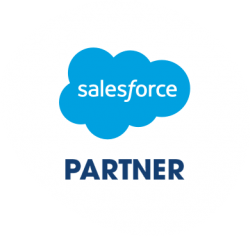SHOPPING FOR PERFECTION
What not to underestimate in an implementation project.
Shopping is one of those activities people either love or hate. Some people love to try things on, others experiment with new styles, some blow their budget on one high ticket item, and a lot of the time we just end up window shopping. The problem is though, when you have seen something that can make your life so much easier, it’s hard to go back to what you have currently and be happy with it. The wheels are set in motion and what follows tends to be a long dilemma weighing up what you want versus what you actually need.

Shopping for CRM is not that different. What an organisation wants or needs can be two very similar things, but you have so many places to go and try things on for size, and to see how they would fit in your organisation. You can look at the user interfaces, price out various options, and even read the reviews from other customers. But pressing “Buy Now” is just the start. Yes, you can gain instant access and log in, but where do you start. Of course, you have an instruction manual, but it doesn’t always tell you the little stumbling blocks that crop up in so many projects.
Every organisation is different, but we have discussed in previous blogs how the Salesforce CRM is a tool that can be used by everyone. It’s adaptable to your needs but it’s also simple to use as an out-of-the-box product. So there seems to be a juxtaposition in this sentence, because there is so much that Salesforce can do, and there is so much that an organisation wants to include from their legacy systems, that implementation can’t possibly be a simple process. And yet, sometimes just taking a look at the customer reviews can not only show you how happy organisations are with their new purchase but also what they wish they had known before they started. Underestimating the setup process is a common trend as it’s not just about putting in a few batteries and pressing start.
We here at Cirrico have had the pleasure of implementing a wide range of Salesforce projects from customers who wanted to get the manufacturing processes streamlined, to nonprofits who want their fundraising efforts to be trackable, and colleges that want to be better connected to their students and alumni. Our aim with any project is to solve whatever business problem you may have whilst helping you to manage the risks along the way. When we set a milestone for us to hit, we have thought about any little pitfall that may hold us back along the way, and there are some that we encourage you to look at too.
So what’s first up?
Well, perhaps a little predictably, it’s cost. No organisation wants to implement a product without ensuring that it is used to its fullest amount. This more than just an impulse buy, it’s an investment and as such, all stakeholders need to be getting the most out of it. So what do you need to be thinking about aside from your initial license purchase? There are many applications and software solutions that work really well with Salesforce, and you should consider what you need out of these, and what would just be nice to have. It’s easy to get carried away with all the bells and whistles that you think you may use. However, in reality, changing to a new system can be daunting enough for your end users. Sometimes, it’s best to think about stages and how much you want to change in one go, thus we recommend, costing out what you need to get started. Get yourself a budget and always plan for a few extra requirements along the way.

As an organisation, you also need to factor in the employee costs. Who is going to keep your system running after the implementation, and will this be a full time job you have to cost out? Who needs to have initial training to get them ready for the new system? How much time from a normal working day will you have to use for this? What is the cost of getting somebody in to help with the implementation versus training up staff internally? And what is the risk involved with all of these questions?
This is a key area that is often underestimated with project work; the time needed from current employees. For an implementation to be successful, employees need to prepare their master data, clean up spreadsheets, learn how to use the new system and test the system as its being built. All of these things can seem like such an imposition to employees who are hard at work with weekly deadlines already in place. However, without all of those things happening, the implementation cannot work they way you want. There will be little tweaks that need to be made to flows, or user permission sets may be incorrect, it takes longer to migrate data than expected, and then as the system is used, data becomes duplicated due to misuse. If your employees see a system that has small errors and doesn’t work as they were promised, they are much less likely to be at the forefront of user adoption. Spending money on a new system that isn’t being used is not an outcome any organisation desires. People are essential to the process, and their time is key.

If we think about all of the processes needed to get you from old system to new, you quickly realise how many changes you are making. This can seem like a scary thing at first, but these changes can help with legal compliance, data security, streamlining processes and making new efficiencies. With that being said, it is very easy to see how important managing change can be. People are creatures of habit. We have favourites, we like to do things in certain ways, and we are thrown off balance when things are changed. There are therefore various aspects of change that you need to consider when starting out. Is anyone going to be reluctant to change and hold up the process? Are the key Stakeholders on board and ready to promote change? Do people understand the importance for the change? How are you going to keep track of their progress internally? At Cirrico, we understand how demanding this can be. We are innovators and we challenge ourselves to go through the same processes as our customers. Change can be implemented to a system overnight, but it can take people a while to get used to something.
And then we come to data migration. This is a big part of any project. In Salesforce you can customise your set up, build reports and dashboards, and create related contacts, but if you have no data in there, these things are all worthless. But at the same time, do you need all of your old data? Is some of it duplicated across several spreadsheets? Have all your employees given you the data in the same format? We find that with many implementations, data is not usually at the top of the customer’s plan. They want all the features, but how they get the data across is an afterthought. Data should not be underestimated, but it so often is. When a customer tells us the state of the data they have, we will ask them how many records they will have, how many spreadsheets and how many people this comes from. And from there we estimate a time for how long this will take. However, it’s not just about the number of records, but the quality of those records, and by not cleaning them internally, the process can end up costing more time and money to fix quickly to stay on your go live schedule. It doesn’t matter how complicated your data is, you can get it into Salesforce cleanly and without duplication, but you have to consider this from the beginning. Nobody has the time to sit and enter each line in manually, but collectively, your organisation should find the time to do a little cleansing before you upload.
Where does this all lead you to I hear you ask?
Is it time to panic?
Not at all.
Just get yourself thinking about how you are going to manage the expectations of your stakeholders and get a time and cost plan in place from the outset.
Needless to say, we at Cirrico believe that having a good implementation partner from the outset is key to a successful project. We do just build the pages and move the data, we are here to train, to help with testing, to be your guides on data set up, and most importantly of all, we are here to understand what the main objective is for your organisation. Salesforce can do an immense amount for you, so we are here to ensure you get the relevant things out of it for your organisation.
So, no matter how far down the CRM path you are, at the end of the day you need to understand not only your business but the world of CRM as well. We are here to learn with you.




